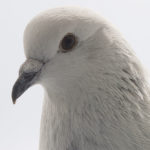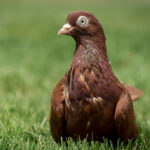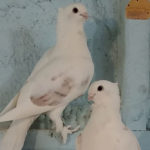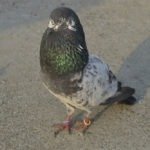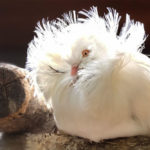The Old German Owl Pigeon is an interesting and unique pigeon that is often tame and relaxed in its character making it a great pet and also show pigeon with its interesting and graceful style. It is a German breed that is classed as ‘fancy’ in the US Pigeon Breed Group while being known as Owl Pigeons in the EE Breed Group.
The breed was originally recognised in Germany in 1956, but the official standard wasn’t adopted until 1960 and adopted into the National Pigeon Association of America in 1999. Due to its resemblance to a Gull it was the first pigeon breed to be recognised as ‘Little Gull’ (Mövchen) in Germany.
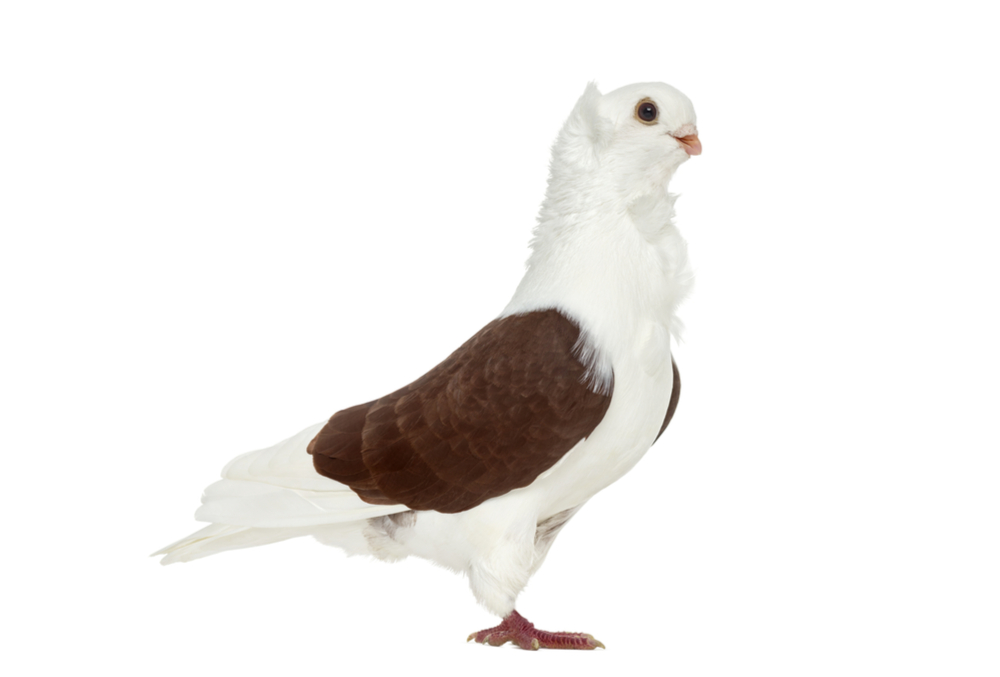
Old German Owl Pigeons are common in their homeland of Germany and are bred across the world for show because of their unique style and look among other pigeons.
In 1870, as pigeon collection culture started to expand into other parts of Europe, Oriental Frills and Anatolian owls were imported into Germany. It’s very likely that breeding experiments between those two breeds led to the variety that we recognise today as the Old German Owl Pigeon.
Appearance
As a medium sized breed, the average height of a mature Old German Owl Pigeon is around 25cm in height. The average body weight of a mature Old German Owl Pigeon is anywhere between 280g – 360g. A longer body and feather length could make the bird undesirable for showing purposed but still great as a pet.
- The Old German Owl Pigeon has a rounded head with an arched forehead, closing with rosettes and a shell crest.
- The pigeon’s eyes are large and bright, while the bird’s cere is light. Coarse or dark eye ceres can be undesirable for showing.
- The bird has a medium length beak that is fleshy colored and broad which creates a contrast to its forehead. It’s common for the Old German Owl Pigeon to have a small and undeveloped wattle. The smaller the beak the less desirable for showing.
- The Old German Owl Pigeon holds its head highly and proudly on its neck, along with a nice frill and slight dewlap.
- Similarly, the pigeon’s breast is equally proud and well rounded. The pigeon is most comfortable holding its breast forward.
- Broad shoulders mean the pigeon’s back becomes more and more narrow the further down the tail you get.
- As a result of the pigeon’s broad shoulders the wings follow a similar pattern to the pigeon’s back and are close to the body, narrowing around the tail.
- The tail is equally neat, held comfortably tight by the pigeon.
- The pigeon’s short shanked legs are barely visible, especially as its feet and toes are never feathered even in rare breeding circumstances.
- Well developed feathers are tight and held close to the body and develop well with maturity.
In breeding, some variations on color that have been reported are: ash red, brown, blue, recessive red, checks, spread, and bars in either black, red, brown, white or some dilution of these colors.
All colors should be as saturated as possible to increase the exhibitive qualities of the bird, as the body is colored pure white.
The shield marked variety usually has around 10 whit feathers alongside other colored tail feathers. The tail marked variety is often completely white except for its feathers and portion of its back and under tail.
Uses
Owners buy and use this bird for exhibition shows and collect and care for them as a hobby. As an Old German Owl Pigeon is a ‘fancy breed’ they are mainly used for show and ornamental purposes but work well as pets too. Their calm nature makes them perfect for both shows and pets.
The average lifespan of the Old German Owl Pigeon can be anywhere from 7 to 10 years with a natural death.
Flying
The Old German Owl Pigeon wouldn’t be the first choice for a flying aerial pigeon who would gain any awards for flying. But as with most Pigeons, younger versions of this variety do experiment and attempt some interesting flying acrobatics that could in theory be trained.
Allow your Old German Owl Pigeon lots of time to practice flying as it is a natural skill for them. As they are naturally good fliers they will be able to escape predators more easily which will protect your investment.
Breeding
With this variety you will have the usual challenges and difficulty breeding as you do other varieties. As the Old German Owl Pigeon has some desirable traits to make it a parent, it will raise its own chick well including other fostered children.
Although don’t make them foster too many children, or too often in a year, as the pigeon will stress out trying to look after all the chicks. For the same reasons, don’t make the pigeon breed more than three times a year max as this will also stress them out.
You should have the outcome you expect when breeding this variety of pigeon with another, although you may get a few coloring surprises along the way such as darker colors than you imagined and having different colored offspring. This is due to the potential genetic color varieties present in the Old German Owl Pigeon, although this isn’t too common.
Characteristics
The Old German Owl Pigeon is a pretty calm and relaxed pigeon in most circumstances. Some owners report that they can be quite tame and shy birds.
Having more than one Old German Owl Pigeon can encourage the other pigeons of this variety to relax more and normalize more quickly, this is because this variety of pigeon often copies the behaviour of other birds.
Similarly, make sure you keep the Old German Owl variety alongside other tame varieties so they don’t get too stressed out. As ever, the less stressed out you make your bird the more calm it will be in shows. As the variety is often calm by nature, they are good for shows as well as relaxing pets.

